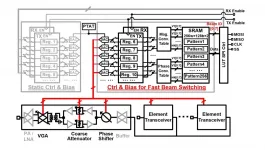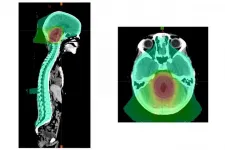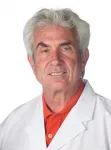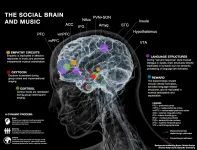(Press-News.org) When is a weed not a weed?
Can native plants be weeds?
Sweet pittosporum (Pittosporum undulatum) was once a well-behaved tree growing in gullies from Gippsland in Victoria up to Brisbane in Queensland.
But it is now a major problem, leading to an almost complete suppression of native vegetation where it has invaded. Programs to clear it have successfully allowed indigenous plants to return, and within 15 years, with moderate follow up, treated sites are well on the way to successful restoration.
However, there has been some debate on whether this is good or bad for birds such as the threatened Powerful Owl.
New research by Monash University scientists from the School of Biological Sciences published today in Ecological Solutions and Evidence shows that the richness and abundance of birds is much reduced in areas with dense Pittosporum canopies.
"The almost complete absence of any understory vegetation and no ground cover means there is very little for birds to eat in invaded sites," said lead study author Dr Ben O'Leary, who conducted the surveys as part of his PhD.
"Most habitat components for birds exists within the Eucalyptus overstorey and mid canopy. The presence or removal of Pittosporum doesn't appear to greatly influence ground storey bird species, which have been in long-term decline."
The study found that there are also fewer carnivorous birds in Pittosporum-invaded sites, probably because there is less prey on the ground and the dense Pittosporum canopy makes it hard for these large birds to navigate through these areas.
"While invaded sites are not great habitat, restoration projects need to ensure that the full range of habitats continue to be available during the transition period," Dr O'Leary said.
One difficulty in overseeing the removal of an invasive tree species is that these trees, in certain circumstances, provide structural value to local flora and fauna. There is a lag time between the invaders' removal and its replacement by indigenous alternatives.
"The trick is balancing the progression of weed control with the retention of enough structure to support local plants and animals," Dr O'Leary said.
Project leader and co-author Professor Ros Gleadow also from the School of Biological Sciences, has been studying Pittosporum for over 40 years.
"It is important to get rid of the Pittosporum now," Professor Gleadow said.
"Not only does it suppress the understorey, but in all these years, I have never seen a eucalypt seedling growing under a Pittosporum canopy," she said.
"Once the old eucalypts at a site die, that's it and it of both native vegetation and birds is impossible without major intervention".
Previous work by the group showed that areas can be restored to their original state if there are healthy remnant sites nearby.
"For areas where Pittosporum is native, like around Sydney, management is philosophically complicated but there is no doubt that clearing will to help preserve biodiversity," Professor Gleadow said.
Progressively clearing the Pittosporum over time, leaving some canopy in place in adjacent areas has the double benefit of providing potential roosting sites for the Powerful Owls, as well as increasing the number of prey.
Once the new shrubs and trees have grown, then clearing could progress to the next area.
INFORMATION:
Astronomers have spotted a giant 'blinking' star towards the centre of the Milky Way, more than 25,000 light years away.
An international team of astronomers observed the star, VVV-WIT-08, decreasing in brightness by a factor of 30, so that it nearly disappeared from the sky. While many stars change in brightness because they pulsate or are eclipsed by another star in a binary system, it's exceptionally rare for a star to become fainter over a period of several months and then brighten again.
The researchers believe that VVV-WIT-08 may belong to a new class of 'blinking giant' binary star system, where a giant star ? 100 times larger ...
Oncotarget published "The presence of polymorphisms in genes controlling neurotransmitter metabolism and disease prognosis in patients with prostate cancer: a possible link with schizophrenia" reported that polymorphisms of neurotransmitter metabolism genes were studied in patients with prostate cancer (PC) characterized by either reduced or extended serum prostate-specific antigen doubling time corresponding to unfavorable and favorable disease prognosis respectively.
The following gene polymorphisms known to be associated with neuropsychiatric disorders were investigated:
A. The STin2 VNTR in the serotonin transporter SLC6A4 gene;
B. The 30-bp VNTR in the monoamine oxidase A MAOA gene;
C. The Val158Met polymorphism in the catechol-ortho-methyltransferase ...
Scientists at Tokyo Institute of Technology (Tokyo Tech) and NEC Corporation jointly develop a 28-GHz phased-array transceiver that supports efficient and reliable 5G communications. The proposed transceiver outperforms previous designs in various regards by adapting fast beam switching and leakage cancellation mechanism.
With the recent emergence of innovative technologies, such as the Internet of Things, smart cities, autonomous vehicles, and smart mobility, our world is on the brink of a new age. This stimulates the use of millimeter-wave bands, which have far more signal bandwidth, to accommodate these new ideas. 5G can offer data ...
Medulloblastoma is a rare but devastating childhood brain cancer. This cancer can spread through the spinal fluid and be deposited elsewhere in the brain or spine. Radiation therapy to the whole brain and spine followed by an extra radiation dose to the back of the brain prevents this spread and has been the standard of care. However, the radiation used to treat such tumors takes a toll on the brain, damaging cognitive function, especially in younger patients whose brains are just beginning to develop.
A national study led by Washington University School of Medicine in St. Louis and St. Jude Children's Research Hospital suggests that children with what is called "average risk medulloblastoma" can receive a radiation "boost" to a smaller ...
Metformin is a widely prescribed blood sugar-lowering drug. It is often used as an early therapy (in combination with diet and lifestyle changes) for type 2 diabetes, which afflicts more than 34 million Americans.
Metformin works by lowering glucose production in the liver, reducing blood sugar levels that, in turn, improve the body's response to insulin. But scientists have also noted that metformin possesses anti-inflammatory properties, though the basis for this activity was not known.
In a study published online June 8, 2021 in the journal END ...
Married men who don't help out around the house tend to bring home bigger paychecks than husbands who play a bigger role on the domestic chores front.
New research from the University of Notre Dame shows that "disagreeable" men in opposite-sex marriages are less helpful with domestic work, allowing them to devote greater resources to their jobs, which results in higher pay.
In contemporary psychology, "agreeableness" is one of the "Big Five" dimensions used to describe human personality. It generally refers to someone who is warm, sympathetic, kind and cooperative. Disagreeable people do not tend to exhibit these characteristics, and they tend to ...
An estimated 8 million tons of plastic trash enters the ocean each year, and most of it is battered by sun and waves into microplastics--tiny flecks that can ride currents hundreds or thousands of miles from their point of entry.
The debris can harm sea life and marine ecosystems, and it's extremely difficult to track and clean up.
Now, University of Michigan researchers have developed a new way to spot ocean microplastics across the globe and track them over time, providing a day-by-day timeline of where they enter the water, how they move and where they tend to collect.
The approach relies on ...
Have you ever been cut off in traffic by another driver, leaving you still seething miles later? Or been interrupted by a colleague in a meeting, and found yourself replaying the event in your head even after you've left work for the day? Minor rude events like this happen frequently, and you may be surprised by the magnitude of the effects they have on our decision-making and functioning. In fact, recent research co-authored by management professor Trevor Foulk at the University of Maryland's Robert H. Smith School of Business suggests that in certain situations, incidental rudeness like this can be deadly.
In "Trapped ...
HOUSTON - (June 10, 2021) - Leaders who encourage their employees to learn on the job and speak up with ideas and suggestions for change have teams that are more effective and resilient in the face of unexpected situations, according to new research from Rice University and the University of Windsor.
"A Resource Model of Team Resilience Capacity and Learning" will appear in a special issue of Group & Organization Management. Authors Kyle Brykman, an assistant professor at the Odette School of Business at the University of Windsor, and Danielle King, an ...
Music is a tool that has accompanied our evolutionary journey and provided a sense of comfort and social connection for millennia. New research published today in the American Psychologist provides a neuroscientific understanding of the social connection with a new map of the brain when playing music.
A team of social neuroscientists from Bar-Ilan University and the University of Chicago introduced a model of the brain that sheds light on the social functions and brain mechanisms that underlie the musical adaptations used for human connection. The model is unique because it focuses on what happens in the brain when people make music together, rather than when they listen to music individually.
The research was inspired by creative efforts of people around the world to reproduce ...




